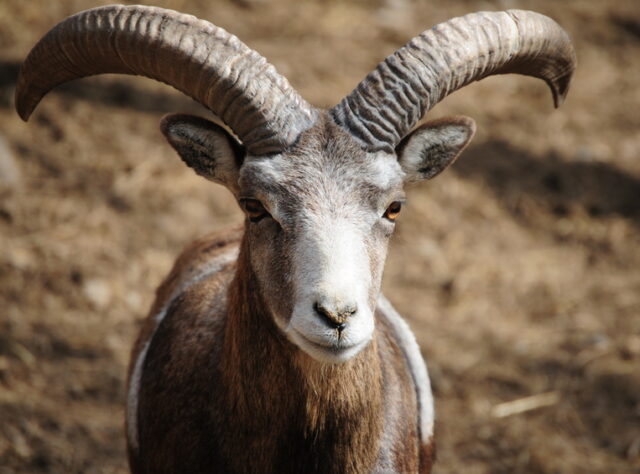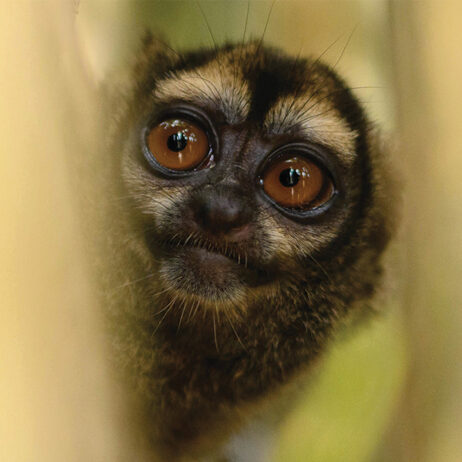
An Armenian Mouflon in Armenia's Caucasus Refuge. Credit: Foundation for the Preservation of Wildlife and Cultural Assets / FPWC
This is the latest entry of the Barnes’s Bestiary series, written by journalist, author, World Land Trust (WLT) ambassador and member of the WLT council Simon Barnes. See here to read all of Simon’s other entries so far.
How many domestic sheep are there in the world? The answer is 1.266 billion, up from 1.263 billion in 2020. That is, I think you’ll agree, quite a lot of sheep. Top sheep nations in order: China, India, Australia (according to figures from the International Wool Textile Organisation).
All our domestic sheep are descended from a wild species called the mouflon. It gets complicated here: another form of wild sheep, one called European mouflon, is probably descended from domestic sheep that went feral. But let’s concentrate on the truly wild mouflon, which lives in West Asia and comes in five recognised sub-species.
One of these is the Armenian mouflon (Ovis gmelini gmelini), and it’s found in Azerbaijan as well as Armenia: there are about 500 in all, 250 in Armenia. They are, then, animals in serious need of care and attention: our Armenian partner organisation FPWC looks after the Caucasus Wildlife Refuge, which holds a population of mouflon.

The Armenian Mouflon is a subspecies of the Mouflon, a wild sheep thought to be the ancestor of all domestic sheep breeds in the world today. Credit: Alexander Malkhasyan (CC-4.0)
They are animals with a head for heights. When spring comes to the mountains of the Caucasus they climb after the retreating snow, spending their summers in wild pastures just below the permanent snow, places inaccessible to all save the bold. They drop down again as winter advances.
They are fine animals: every bit as tough as you’d expect. The males carry a stunning set of horns and I use the adjective with some care: head-on-head battles are part of their way of life. The horns of a mature male can make a complete revolution. They are very keen on dominance hierarchy and have the weaponry to maintain it: dominance means greater access to females.
They do well in places that other species find too tough to deal with: poor pasture, semi-desert, rough grazing, high exposure: all traits that inspired humans to bring them into our own domestic lives.
And that’s the main problem for wild mouflons. Domestic sheep, with their shepherds and their dogs all compete with mouflons for room in the mountains, squeezing the wild ones to the fringes where even a mouflon finds it hard to make a go of it. Diseases from domestic sheep make it worse.
But out there on those wild mountains, impossibly close to the sky, there is a great sense of wildness in the air, as I’ve felt when I’ve been there with FPWC. The mouflons need the mountains: but it also seems to me that the mountains need the mouflons.
Join us in supporting Foundation for the Preservation of Wildlife and Cultural Assets to restore part of the Armenian Mouflon’s habitat in the Caucasus Wildlife Refuge.



